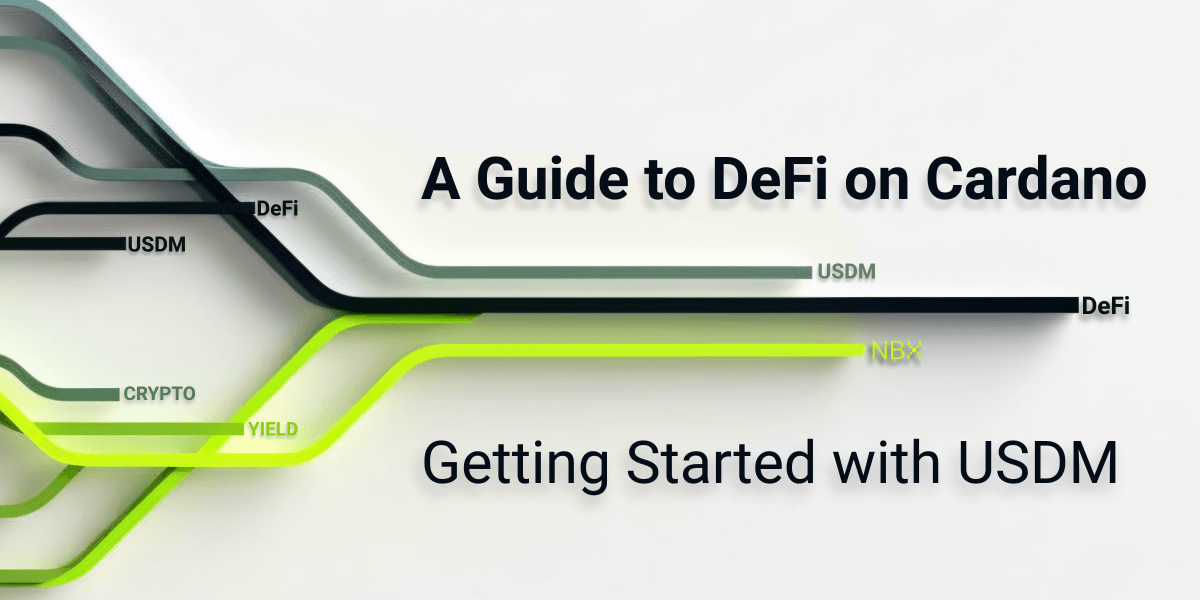Back in 2014, stablecoins were brought into the world for the first time. Now that they’re a fixture on the crypto market, adding more than $15 Billion in value, it’s more important than ever to understand what they are and how they work.
While the prices of most cryptocurrencies are determined by supply and demand, a stablecoin is a cryptocurrency that is designed to have a consistently stable price like $1 a coin.
All existing stablecoins can be split into two categories, which are: fiat-collateralized stablecoins and crypto-collateralized stablecoins.
These are the simplest to understand of the two.
Think of these as cryptocurrencies that are backed by fiat currencies in real bank accounts, like the US Dollar or the Euro. So, for example, for every US Dollar or Euro that is held in a stablecoin project’s bank account, one stablecoin is minted. With this in mind, you can think of fiat-collateralized stablecoins as digital US Dollars or Euros on the blockchain.
Therefore, they maintain their price stability as long as these reserve assets do.
Today, these fiat-backed stablecoins are transacted with and exchanged on many different blockchain networks, the chief of which is Ethereum.
These are pretty similar to fiat-backed stablecoins with the key difference being that they are "pegged to" a single digital currency or a mix of different digital currencies.
The most common cryptocurrency that's used as a reserve asset for crypto-backed stablecoins is Ether, though many more exist.
Because digital currencies or cryptocurrencies are inherently volatile, a cryptocurrency-pegged stablecoin is always “over-collateralized.”
This refers to the fact that while fiat-pegged coins are backed on a 1-1 ratio, these cryptocurrency-backed stablecoins hold crypto deposits that are 150-200% of the value they issue. This percentage is called the collateralization ratio or something similar.
Imagine that you want to buy $100 of a stablecoin that has a 150% collateralization ratio. That means that you will need to deposit $150 of a supported reserve asset to get it. Since we’re talking about crypto-pegged stablecoins, that means depositing something like Ether.
Through all users depositing more cryptocurrency than they receive, the system and its smart contracts are able to account for any possible price volatility.
If you’re wondering about the difference between these two types of stablecoins, it all comes down to decentralization.
This means that while fiat-pegged stablecoins are backed by bank accounts, crypto-backed stablecoins depend on individual users to supply their reserve assets. These users are incentivized to do so with an interest rate that moves up and down based on the supply and demand of the stablecoin involved. So, in the end, you can think of these stablecoins as peer-to-peer lending platforms on the blockchain.
For the most part, stablecoins are used as hedges against the highly volatile cryptocurrency market. This means that because they have a stable value, traders and investors use them to bring down the overall volatility of their portfolios.
Today, both crypto-backed and fiat-backed stablecoins are used for decentralized loans or loans on the blockchain. Though this is an early-stage financial service, it's particularly taken hold this year as one of crypto's most exciting use cases for the real world.
Both types of stablecoins are issued via smart contracts, which are lines of code that function on conditional statements. One of their most popular use cases in this respect is in acting as vaults for cryptocurrencies. Therefore, for example, when you deposit $150 in Ether, the smart contract knows that based on its collateralization ratio of 150%, it needs to send you $100 of the stablecoins it's holding in return.
It knows how to do this because it performs actions based on if then statements, as mentioned above.
In addition to controlling the issuance of stablecoins, smart contracts also control their collateralization, which typically only matters in the case of crypto-pegged stablecoins.
Imagine, for example, that a multitude of users pulled their collateral at once. This would cause the stablecoin's contracts to have a lower than ideal collateralization. Once the collateralization ratio of the Stablecoin involved dropped below its ideal rate, its smart contracts could trigger what is called a liquidation event.
What this means is that the contract could, for example, destroy or "burn" stablecoins to equalize the collateralization ratio and price of the stablecoins involved once again. This, of course, presupposes that collateral levels will stabilize at some point and not decrease in perpetuity.
There are 3 major stablecoins, which consistently sit in the top 50 cryptocurrencies, based on their value. Beyond these, there are many more that are much more early-stage projects with far lower market caps.
In short, yes, if a stablecoin is backed by fiat currency, then it can always be exchanged on a 1:1 basis for it. This is because at all times, each fiat-pegged stablecoin is supposed to keep a price of $1.
Since the beginning of stablecoins, the auditing of their reserves has always been a concern.
Crypto-backed stablecoins have historically done a better job of making sure this happens because their reserves can always be viewed with tools like block explorers, that are websites which let anyone type in a blockchain address and look at the assets that it is holding.
With cryptocurrency-backed stablecoins, the volatility of their reserves also becomes a concern as it can dramatically affect the price or value of the coin. All cryptocurrencies are volatile, which is why, as previously said, cryptocurrency-pegged stablecoins are consistently over-collateralized.
Furthermore, these stablecoins can lose their stability or peg if enough users take out their “reserve capital” at once. Because of this, these crypto-backed stablecoins still run the risk of having too high of a price volatility.
Fiat-collateralized stablecoins don’t carry these two risks because they are backed by popular fiat currencies that have stable values, in bank accounts that are owned by a single company or consortium. So, they keep a price of $1 or 1 of whatever currency they are backed by, no matter the circumstances.
USD Coin, which is the Stablecoin that we support today on the NBX platform, is a US Dollar backed stablecoin with a price of $1 a coin that addresses all of the risks mentioned, including posting regular audits of its reserves.
The article does not constitute financial advice.


